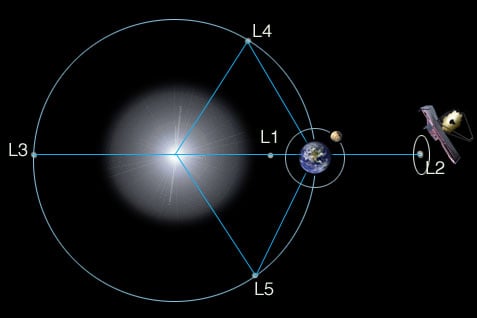We're inching closer and closer to the James Webb Space Telescope's (JWST) launch date of March 30th, 2021, (or maybe July 2021.) We never thought we'd get this close, with only a year to go before we send this powerful space telescope on its way. Now the telescope has been put in its launch configuration.
The JWST is far too big to be launched in its full-sized, operating configuration. Instead, it's been designed to fold down into a size small enough to fit inside the fairing of its Ariane 5 launch vehicle. It'll then unfold once it's free from the rocket and on its way to the Earth-Sun L2 point, where it'll do its observing.
"The James Webb Space Telescope achieved another significant milestone with the entire observatory in its launch configuration for the first time, in preparation for environmental testing," said Bill Ochs, Webb project manager for NASA Goddard Space Flight Center in Greenbelt, Maryland. "I am very proud of the entire Northrop Grumman and NASA integration and test team. This accomplishment demonstrates the outstanding dedication and diligence of the team in such trying times due to COVID-19," Ochs said in a press release.
The JWST has gone through a series of critical steps in recent months. About a year ago it passed its final thermal vacuum test. And last October, it tested its sophisticated, five-layer sunshield. Now that they've put the telescope into launch configuration, we're really getting excited. And anxious.
Testing the JWST has taken a lot of time. It's an intricate piece of engineering. The testing team had to ensure that each piece of hardware, and all of the software, worked individually. Then they had to assemble it and test it all as integrated systems.
Now, the James Webb is fully assembled, and the testing team has put the 'scope through its paces, carrying out all of the movements that it performs to deploy itself in space. Folding it into its stowed position allows thorough testing, and it means that the telescope can now proceed to what's called final environmental testing, also known as acoustic and vibration testing.
That's not quite the end of testing though. Once those acoustic and vibration tests are completed, the Webb will be deployed one final time here on the ground, just to make sure. Then, if all goes well, it'll be launch time.
Like many human endeavours right now, the James Webb team has had to adapt to the novel coronavirus pandemic.
"While operating under augmented personal safety measures because of the novel coronavirus (COVID-19), the project continues to make good progress and achieve significant milestones in preparation for upcoming environmental testing," said Gregory L. Robinson, the Webb program director at NASA Headquarters in Washington, D.C. "Team member safety continues to be our highest priority as the project takes precautions to protect Webb's hardware and continue with integration and testing. NASA will continually assess the project's schedule and adjust decisions as the situation evolves," Robinson said in a press release.
JWST is billed as the successor to the Hubble, though the James Webb is focused on infrared observations. So in that sense, it's a successor to NASA's Spitzer Space Telescope, which just retired. It should be able to observe the formation of the Universe's first galaxies, and examine the atmospheres of exoplanets. And, no doubt, it'll give us some surprises, and find things we never expected to find.
The JWST is a joint mission between NASA, the ESA, and Canada, the biggest little country in space exploration.
 Universe Today
Universe Today




